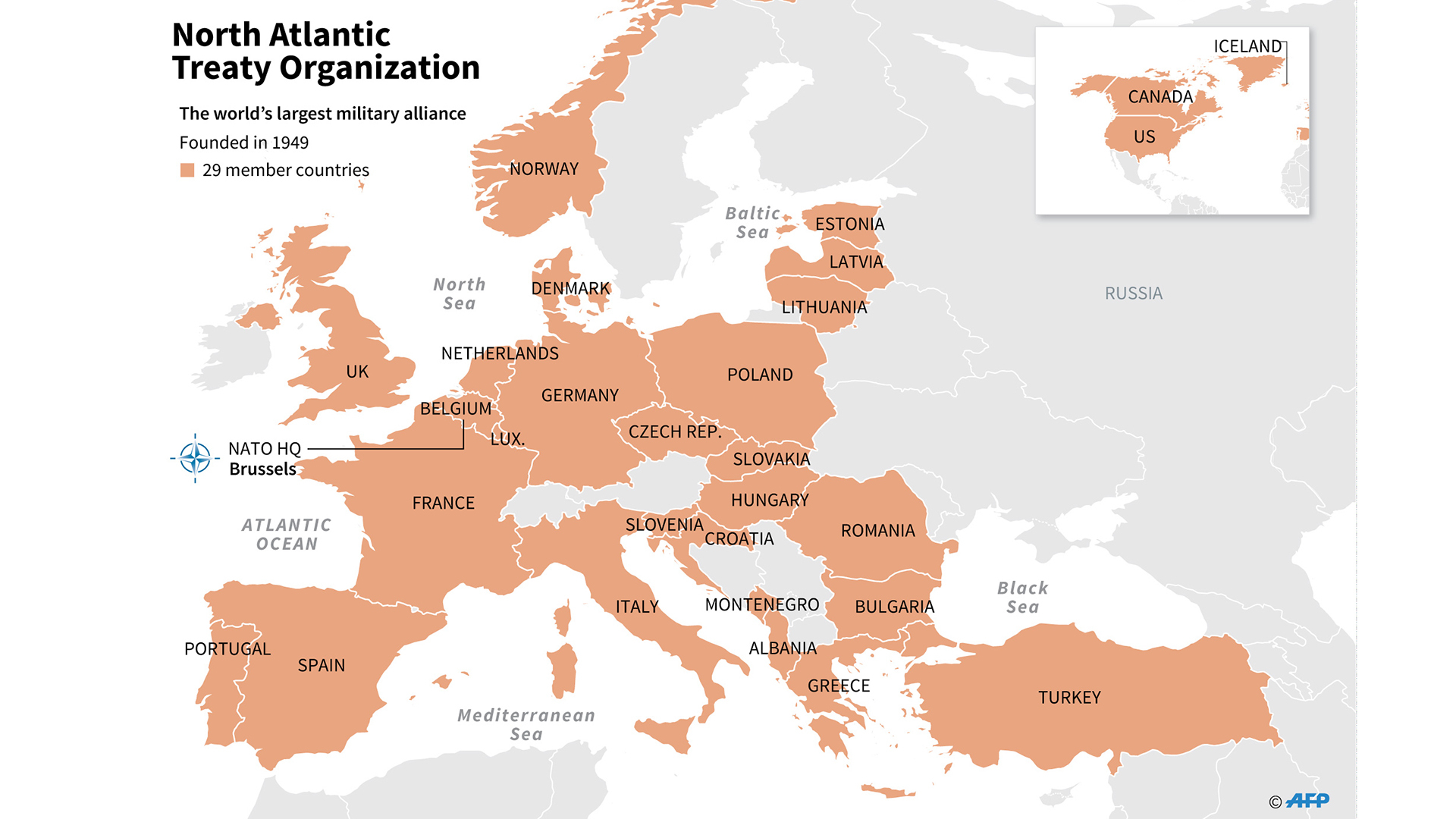NATO’s Historical Evolution

Nato members – The North Atlantic Treaty Organization (NATO) was established in the aftermath of World War II as a collective security alliance between North American and European countries. Its primary purpose was to deter Soviet aggression and promote stability in Europe.
Formation and Early Years
NATO was founded on April 4, 1949, with the signing of the North Atlantic Treaty in Washington, D.C. The original members included the United States, Canada, the United Kingdom, France, Belgium, the Netherlands, Luxembourg, Norway, Denmark, Iceland, Italy, and Portugal.
In the early years, NATO focused on building up its military capabilities and developing a common defense strategy. The alliance also played a key role in the Cold War, providing a framework for cooperation between the United States and its European allies.
Expansion and Transformation
NATO has undergone several expansions since its inception. In 1952, Greece and Turkey joined the alliance, followed by the Federal Republic of Germany in 1955. In 1982, Spain joined NATO, and in 1999, Poland, Hungary, and the Czech Republic were admitted.
NATO members will gather in 2024 for a summit that is expected to address key issues facing the alliance. The NATO Summit 2024 will be an important opportunity for member states to discuss and coordinate their responses to evolving security challenges.
The summit will also provide a platform for NATO members to reaffirm their commitment to the collective defense of the alliance.
After the end of the Cold War, NATO began to transform its mission from collective defense to crisis management and peacekeeping. The alliance has participated in a number of operations, including the Kosovo War in 1999, the Afghanistan War in 2001, and the Libyan Civil War in 2011.
Recent Developments
In recent years, NATO has faced a number of challenges, including the rise of Russia and the threat of terrorism. The alliance has responded by increasing its military spending and developing new capabilities. NATO has also strengthened its partnerships with other international organizations, such as the United Nations and the European Union.
NATO members, including the United States, have expressed their commitment to collective security and the defense of their allies. President Biden’s recent ABC interview highlighted the importance of NATO’s role in maintaining stability and deterring aggression. As the world faces evolving threats, NATO members remain steadfast in their support for the alliance and its mission.
Timeline of Key Dates, Nato members
- 1949: NATO is founded with 12 member states.
- 1952: Greece and Turkey join NATO.
- 1955: West Germany joins NATO.
- 1982: Spain joins NATO.
- 1999: Poland, Hungary, and the Czech Republic join NATO.
- 1999: NATO launches Operation Allied Force in Kosovo.
- 2001: NATO launches Operation Enduring Freedom in Afghanistan.
- 2011: NATO launches Operation Unified Protector in Libya.
NATO’s Strategic Objectives and Missions: Nato Members

NATO, as a collective defense alliance, has a fundamental objective to safeguard the freedom and security of its member states. The alliance’s strategic objectives have evolved over time, adapting to the changing security landscape. Initially, NATO’s primary mission was to deter and defend against a potential Soviet invasion of Western Europe. However, the end of the Cold War and the emergence of new threats have led to an expansion of NATO’s missions.
Evolution of NATO’s Missions
In the post-Cold War era, NATO has taken on a broader role in international security, including peacekeeping operations, crisis management, and counterterrorism. The alliance has deployed troops to various regions, such as the Balkans, Afghanistan, and Libya, to help stabilize and secure conflict-affected areas. NATO has also played a significant role in combating terrorism, providing training and support to partner countries and conducting counterterrorism operations.
Challenges and Opportunities
In the contemporary security environment, NATO faces a range of challenges and opportunities. The rise of new threats, such as cyberattacks and hybrid warfare, requires the alliance to adapt and modernize its capabilities. NATO must also address the evolving security landscape in Europe, including the ongoing conflict in Ukraine and the potential for further Russian aggression. At the same time, NATO has the opportunity to strengthen its partnerships with non-member countries and contribute to global security beyond its borders.
NATO’s Membership and Structure

NATO’s membership has grown since its inception, with 30 countries currently being part of the alliance. Each member state joined at different points in time, contributing to NATO’s diverse composition.
The organizational structure of NATO comprises several key bodies, including the North Atlantic Council, the Military Committee, and the International Staff. These entities play distinct roles in decision-making, military planning, and administrative support.
NATO Membership
- Belgium (1949)
- Canada (1949)
- Denmark (1949)
- France (1949)
- Iceland (1949)
- Italy (1949)
- Luxembourg (1949)
- Netherlands (1949)
- Norway (1949)
- Portugal (1949)
- United Kingdom (1949)
- United States (1949)
- Greece (1952)
- Turkey (1952)
- Germany (1955)
- Spain (1982)
- Czech Republic (1999)
- Hungary (1999)
- Poland (1999)
- Bulgaria (2004)
- Estonia (2004)
- Latvia (2004)
- Lithuania (2004)
- Romania (2004)
- Slovakia (2004)
- Slovenia (2004)
- Albania (2009)
- Croatia (2009)
- Montenegro (2017)
- North Macedonia (2020)
NATO Structure
North Atlantic Council
The North Atlantic Council is NATO’s primary political decision-making body. Composed of permanent representatives from all member states, it convenes regularly to discuss and decide on matters related to the alliance’s policies, operations, and budget.
Military Committee
The Military Committee is NATO’s highest military authority, responsible for providing military advice and recommendations to the North Atlantic Council. It comprises the Chiefs of Defense of all member states and is chaired by the Chairman of the Military Committee, a position currently held by Admiral Rob Bauer of the Netherlands.
International Staff
The International Staff is NATO’s administrative and executive body, headed by the Secretary General. It provides support to the North Atlantic Council and the Military Committee, facilitating the implementation of NATO’s policies and decisions.